- Home
- Hooks
The Ins and Outs of Fish Hooks
One of the smallest, but most significant items of your terminal tackle, fish hooks have been in a constant state of development since the animal-bone versions of the Stone Age.
They've come a long way since then of course; there's now a hook design for every aspect of saltwater fishing, from fine wire hooks for delicate baits, large-gape hooks for chunky baits, through to forged hooks for big-game fishing - and the improbable looking circle hook for catch-and-release aficionados.
Then there are single hooks, double hooks and treble hooks and offset shank hooks.
So we're spoilt for choice, but before we can make that choice we need to understand their individual characteristics.
The Anatomy of a Fish Hook
So without further ado, let's get to the point - starting with a look at the anatomy of a typical hook...
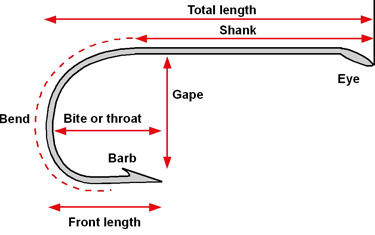 Fish Hook - Naming of Parts
Fish Hook - Naming of PartsA regular 'J' hook design is shown here, identifying the various elements of the design. Hooks intended for specific applications may look rather different.
For instance, hooks for jelly baits - 'Z' hooks - have a cranked shank, and circle hooks - 'C' hooks - have a inward looking point that would seem incapable of catching anything.
The Shank
Three choices here - short, medium and long shank fishing hooks. Your choice of shank length should be made to suit the bait you're going to put on it. Chunky baits like peeler crab and mussel on short shank hooks, and worm, razorfish and sandeel on long shanks hooks for example.
The Eye
On smaller hook sizes, hook eyes are formed by bending the wire round into a circle - an open eye. Larger hooks, designed for maximum strength will have the end of the eye brazed to the shank, forming a closed eye.
The eye will be either in line with the shank - a straight eye - or bent to form either a turned-down or turned-up eye.
There are different knots for tying your line to each of these hook-eye configurations - take a look at them at tying fishing hooks.
The Point
Some hooks have an offset, or reversed, point which is supposed to
improve their penetration capabilities. These are fine for bait but
unsuitable for lures, as the twist in the hook may cause the lure to
spin or run offline.
The point itself will be either conical like a pin, or knife-edged.
For offshore trolling lures you won't go far wrong by using Mustad's 'Southern & Tuna' or 'Sea Demon' patterns. These have knife-edge points, the two ground sides of which can be easily sharpened with a whetstone or file. The inner surface of the barb is flat, thus making it difficult for a large fish to throw the hook.
The Barb
This serves two purposes. To stop the bait falling off the hook and to prevent the fish from shaking itself free.
Incidentally, some hooks have two or three further barbs on the shank and are known as bait-holder hooks.
They're not entirely successful as they'll disembowel worm baits, and often allow the bait to ratchet their way up the shank leaving the hook point exposed. If a fish then grabs the bait, it will miss the point entirely.
Rather than use one of these for long baits like marine worms and sandeels that would otherwise bunch up on a single hook, use the two-hook pennel rig.
Barbless Fish Hooks
Barb-less hooks haven't caught on for saltwater fishing like they have for freshwater fishing, but that may change.
It used to be that pretty much anything we caught was destined for the pot - or the cat - so any damage done by the hook wasn't much of a issue. But these days, with conservation a very real concern for most of us, catch-and-release is fast becoming the norm.
But there's one time when you'll really wish you'd been using a barbless hook - and that's when you've managed to get one embedded in your finger, or some other sensitive body part.
There're two ways of getting it out - neither of which will encourage you to do it again.
Click Here to See How to Get a Hook Out of Yourself...
Fishing Hook Sizes
The smallest hook you're likely to use for saltwater fishing would be a size 12 which is the size of the nail on your little finger, and that would be for harbour mullet fishing with a pinch of bread flake. As the hooks get larger, the numbers get smaller and only even numbers are used - 10, 8, 6, 4, 2 to 1.
Size 1 is still a small hook by sea fishing standards - suitable only for the smallest flatfish and the like.
The next size up is a 1/0, increasing in size through 2/0, 3/0, 4/0, 5/0, 6/0, 7/0, 8/0, 9/0, 10/0, 11/0 to a massive 20/0 shark hook.
For more on Fishing Hook Sizes, Click Here...
Types of Fishing Hooks
There are so many different types of fish hooks - treble hooks, double hooks, single hooks, short-shank hooks, long-shank hooks, broad gape hooks, offset-shank hooks etc, etc - that they deserve a page of their own...
For more about the Various Types of Hooks, Click Here...
Plain Carbon Steel, or Stainless Steel Fish Hooks?
Fish hooks are made in either plain carbon steel, which corrodes in seawater, or stainless steel which doesn't.
As a result plain carbon steel fish hooks need to be sharpened more often than stainless, and should be rinsed in freshwater and dried at the end of each trip to prevent them rusting.
However, many saltwater fishermen believe that plain steel hooks are more humane than stainless fish hooks since any fish that escapes with one inside will soon get shot of it when the hooks corrode - a process accelerated by digestive juices.
So, angler's convenience - or fish's well-being? Plain carbon or stainless fish hooks? Your call.
Recent Articles
-
Sea Fishing Rods and Reels Must Be Compatible for a Balanced Outfit
Mar 08, 21 08:30 AM
A quality reel fitted to a quality rod doesn't necessarily make it a quality outfit. Your fishing rods and reels have to be properly matched if you're to get the best out of them, and here’s how -
Essential Lure Fishing Tips That All Saltwater Anglers Should Know
Mar 08, 21 04:51 AM
Which single lure fishing tip applies to trolling, jigging, baitcasting, spinning, fly fishing and any other branch of lure fishing? Well, it is the one at the top of this list -
Vital Jig Fishing Tips That You Really Cannot Afford To Miss!
Mar 07, 21 10:20 AM
Essential jig fishing tips to help you select the right lure for successful jig fishing, together with the techniques required to get the most out of your jig fishing outfit
















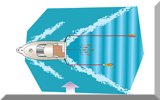

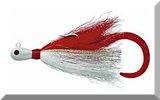
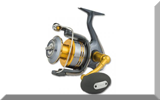
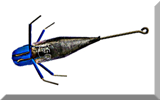
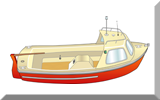
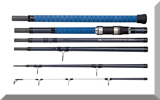
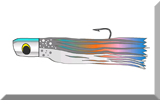
New! Comments
Have your say about what you've just read! Leave me a comment in the box below.